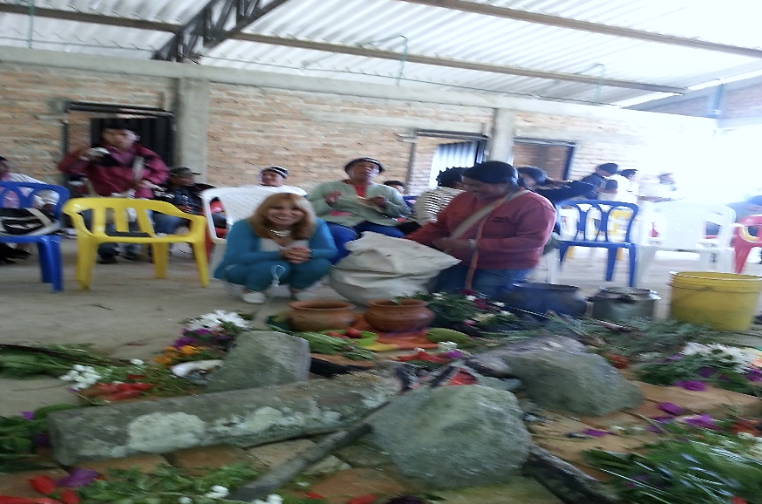[Op-Ed] FROM THE THEORY OF CHAOS, AN APPROACH TO DYNAMICS OF VIRUSES AND PANDEMICS. Part 2
I begin this article by reclaiming the term “chaos”, the foundation of the theory that allows us to understand complex systems that cannot be understood from linear lo
MÁS EN ESTA SECCIÓN
I begin this article by reclaiming the term “chaos”, the foundation of the theory that allows us to understand complex systems that cannot be understood from linear logic or casuistry, for example, viruses, the Solar System, tectonic plates and population increases.
Chaos is a word that derives from the Greek, Χάος Kháos or cháos, which refers to the unpredictable and also derives from the Indo-European root *ghn or *ghen of the reconstructed mother language, which would have given rise to the Indo-European languages. Due to linguistic variations, the meaning of the word became disorder, confusion, still the predominant meaning to this day. Many people are surprised that chaos theory exists, that only through it can we come closer to understanding the dynamics (structure and functioning) of microorganisms such as viruses and that this theory has applications in various disciplines, including meteorology, anthropology, sociology, ecology, in environmental sciences and in the management of pandemic crises.
Although, dominantly in everyday life and even in academic life, we rely on linear logic and/or casuistry, there is sufficient "evidence" that allows us to infer: - the universe and the systems that compose it, including the Viruses do not follow the predictable and determined clock model, but are complex systems that have in their structure components such as instability, unpredictability and uncertainty that lead them to “chaotic” functioning. Additionally, chaotic systems have a great dependence on the initial conditions, which is why it is impossible to predict their evolution when these conditions change.
In the case of viruses that have a great dependence on the host machinery and therefore on virus-host interactions for all aspects of their life cycle, the change of their initial host can lead to unpredictable behaviors that make their control difficult.
PREMISES DERIVED FROM THE THEORY OF CHAOS THAT ALLOW US TO APPROACH THE COMPLEXITY OF SARS-CoV-2 AND THAT OF OTHER VIRUSES
The cosmos that includes everything, the animate, the inanimate and therefore, the human species, and microbiological systems such as viruses, is a complex system that does not strictly follow the clock model, predictable and determined, but rather has chaotic behaviors, that is, unpredictable, in such a way that the phenomena of the present are not only a consequence of the past and cause of the future, nor do they obey a linear logic, but rather they depend on and are affected by an enormous set of uncertain factors.
Nature as a complex system with all the beings that make it up and life itself, is made up of a series of interconnected elements. As a result of this interconnection, any small variation in one point on the planet generates a considerable effect in the coming days or weeks at the other end of the earth, due to the so-called butterfly effect. [4] (Pablo Cazau). The spread of the SARS-CoV-2 virus exemplifies this so-called “butterfly effect”: “a sneeze in China caused a health hurricane on the planet” (Vicente Montes 2020).
Although it is stated that systems tend towards stability, understood as the resilience or speed with which the system returns to its original conditions, and that they have resistance, understood as the ability to resist disturbances, said “stability and resistance” are relative. In general, the dynamics of systems (nature, viruses, etc.) is also the result of a self-organization process, from which the system, which is complex, evolves chaotically and external influences (disturbances) accentuate its chaos until a climax state, called the bifurcation point. Upon reaching this point, the system, in our case the virus, SARS-CoV-2, must choose to return to equilibrium and, in that case, no longer fatally affect the new human host (path 1), or reorganize itself into a superior structure and balance, infinitely generating death and more deaths (path 2). Viruses generally take path 1 and that is why, for example, SARS-CoV-2 currently results in not-so-deadly mutations that "coexist" with humans.
DO HUMANS IMPACT THE DYNAMICS OF COMPLEX SYSTEMS, WHETHER NATURAL ECOSYSTEMS OR MICROBIOLOGICAL SYSTEMS, CASE SARS-CoV-2?
From the premise offered by chaos theory, referring to the uncertain and unpredictable dynamics of viruses in our case of SARS-CoV-2 that causes Covid 19, the difficulty of human beings to definitively influence them and “defend themselves effectively,” it is undeniable. However, due to the interaction between all the beings and elements that make up the cosmos, despite the relative autonomies of the parts that, in turn, behave as complex systems, and although humans are an "evolutionary emergency" the impact of any external activity on the dynamics of systems is evident, due to the “butterfly flapping” effect and this circumstance, well used, becomes a possibility for humans.

Photo. Celestial connections enveloped by an interconnected cosmos. Source: https://www.freepik.es/fotos-premium/conexiones-celestes-envueltas-cosmos-ntercambiodo_
Disturbances (fire, eruptions, cyclones, floods, etc.) have always existed in nature, before and despite human existence, and these disturbances have affected different levels of organization of biological systems (both species and populations), however, anthropogenic actions have increased the frequency, extent and intensity of disturbances.
CONTENIDO RELACIONADO
“Human disturbances”, such as agriculture, grazing, mining, extractive activities, pollution, fires, repeat at very short frequencies, compared to natural frequencies, and reveal human responsibility in the processes of degradation and destruction. of ecosystems, as well as in the environmental crisis and global climate change, with the aggravating factor that many ecosystems will have variations that can act as triggers of uncertain dynamics in complex systems such as viruses [11]. And as chaos theory clearly points out, the flap of a butterfly's wings can end up causing a hurricane because all acts and decisions are connected and the possibilities of interrelation are incalculable [12]. From this perspective, possible human responsibilities are deduced in the frequency of pandemics caused by microbiological systems.
IS EVERYTHING LOST TO VIRUSES, ARE THERE POSSIBLE AND NEW HOPES?
“We know that there will be other zoonotic coronaviruses that will infect and emerge to cause serious disease in human populations and we need multiple broad-spectrum medicines that are immediately accessible if we are to protect the health of future populations. We also need effective policies that control ecological environments for the emergence of zoonotic viruses, such as closing open markets and preventing illegal wildlife trade” [13]. Ralph S. Baric. 2024 cited by Audrey Smith.
“…..However, what has been found so far is that the high number of SARS-CoV-2 mutations, such as Omicron, which was detected in several African countries and despite the fact that this variant has around of 50 mutations does not necessarily mean that it is more dangerous, but rather that the virus has adapted more to the human species” [14]. Rocio Tirado Mendoza cited by Consuelo Doddoli, Ciencia UNAM-DGDC
Not everything, however, is lost, there are possible and new hopes. New ways of seeing the world are being born or reborn based on respect for the chaotic complexity of the cosmos that houses us and that call on us to overcome the anthropocentric vision, so that humans stop believing and behaving as the center of the world, but Also, to recognize our responsibility in the dynamics of the cosmos at all its levels, due to interconnectivity.

Photo: Lucía Vásquez Celis and Afro-descendant companion in multi-ethnic and multicultural activity in territories in Paz with collaboration and co-development
“Experiencing solidarity with the entire universe has a lot to do with freeing ourselves from the habit of thinking that we are unconnected fragments, ceasing to emphasize the isolated Self and the awareness that we can only know individually. It has to do with the need to change the perspective of a heroic and individual struggle, and replace it with another of collaboration and co-development, it has to do with the need to stop seeing nature as a set of isolated objects and experience. Instead of obsessing over control and prediction, we must become sensitive to change and the emerging."

Photo. Lucía Vásquez Celis Participating with indigenous peoples of the Colombian Massif, in a ritual of gratitude to Nature






DEJE UN COMENTARIO: